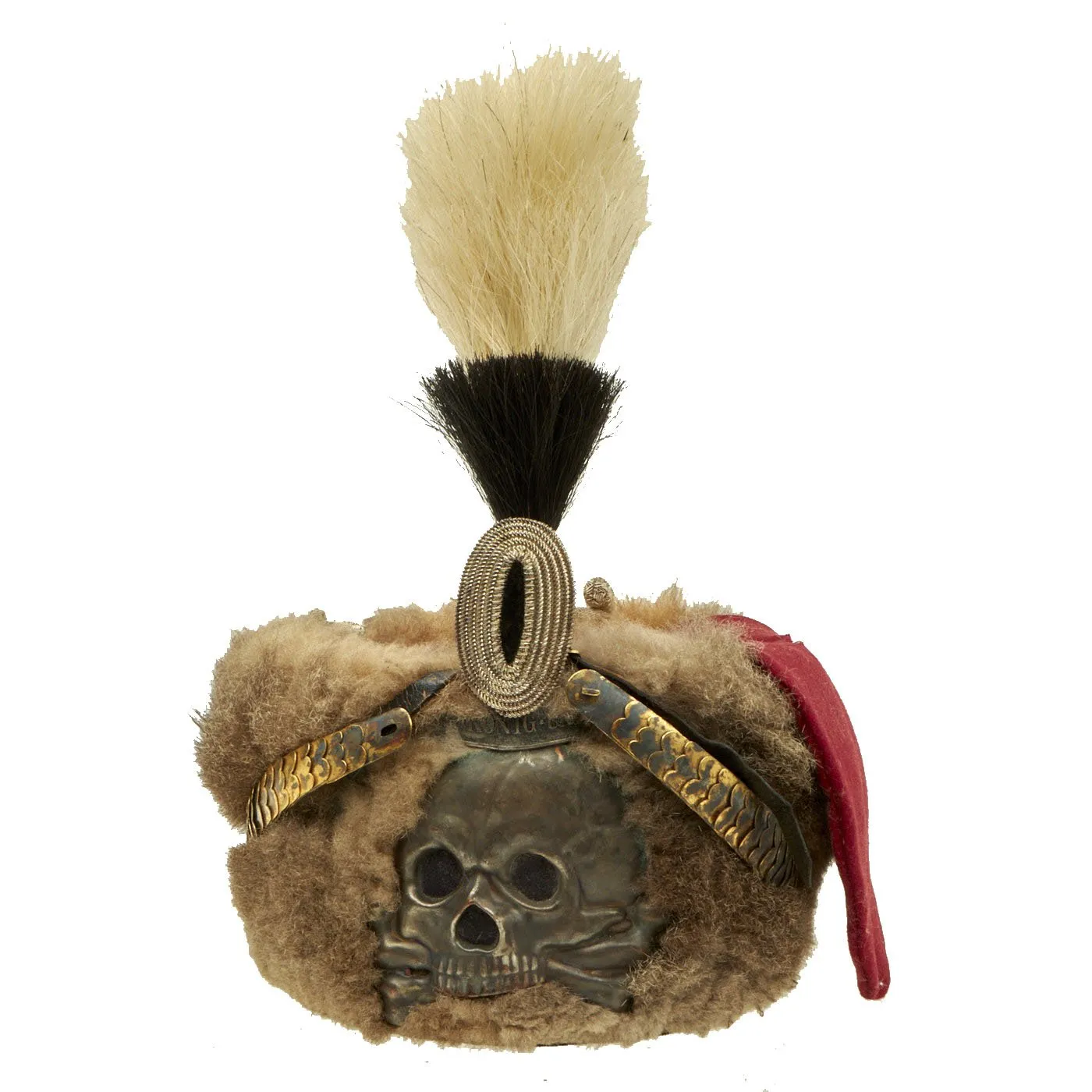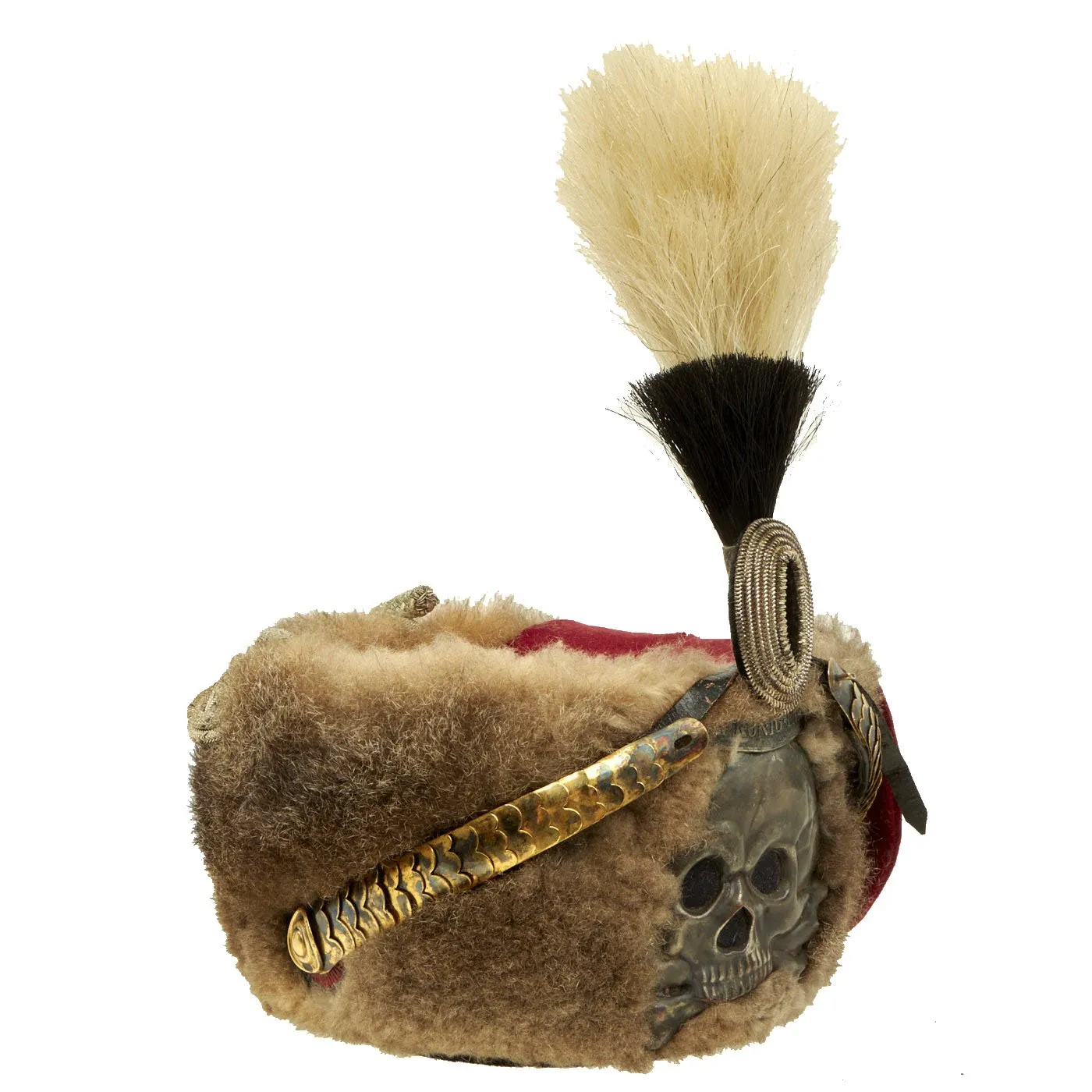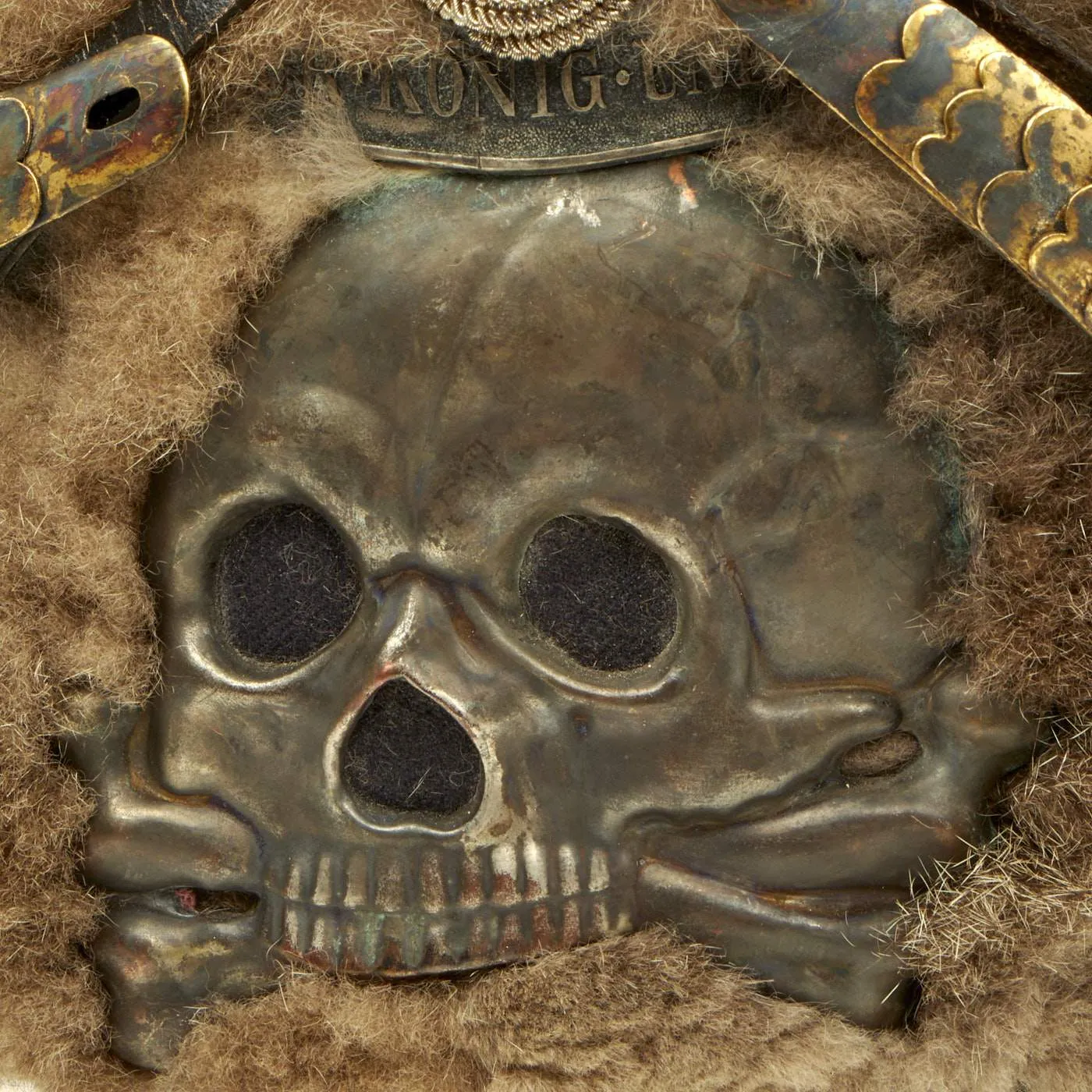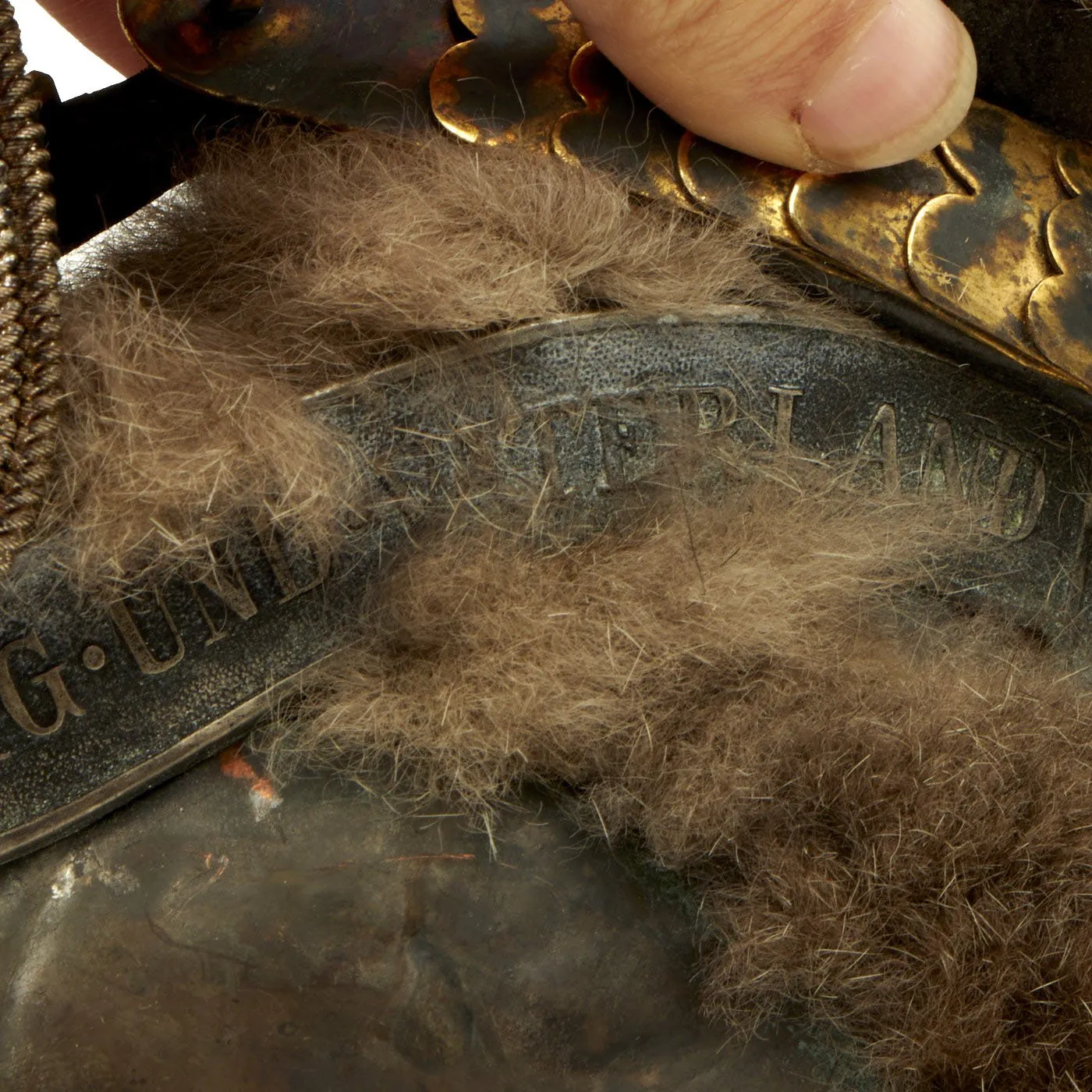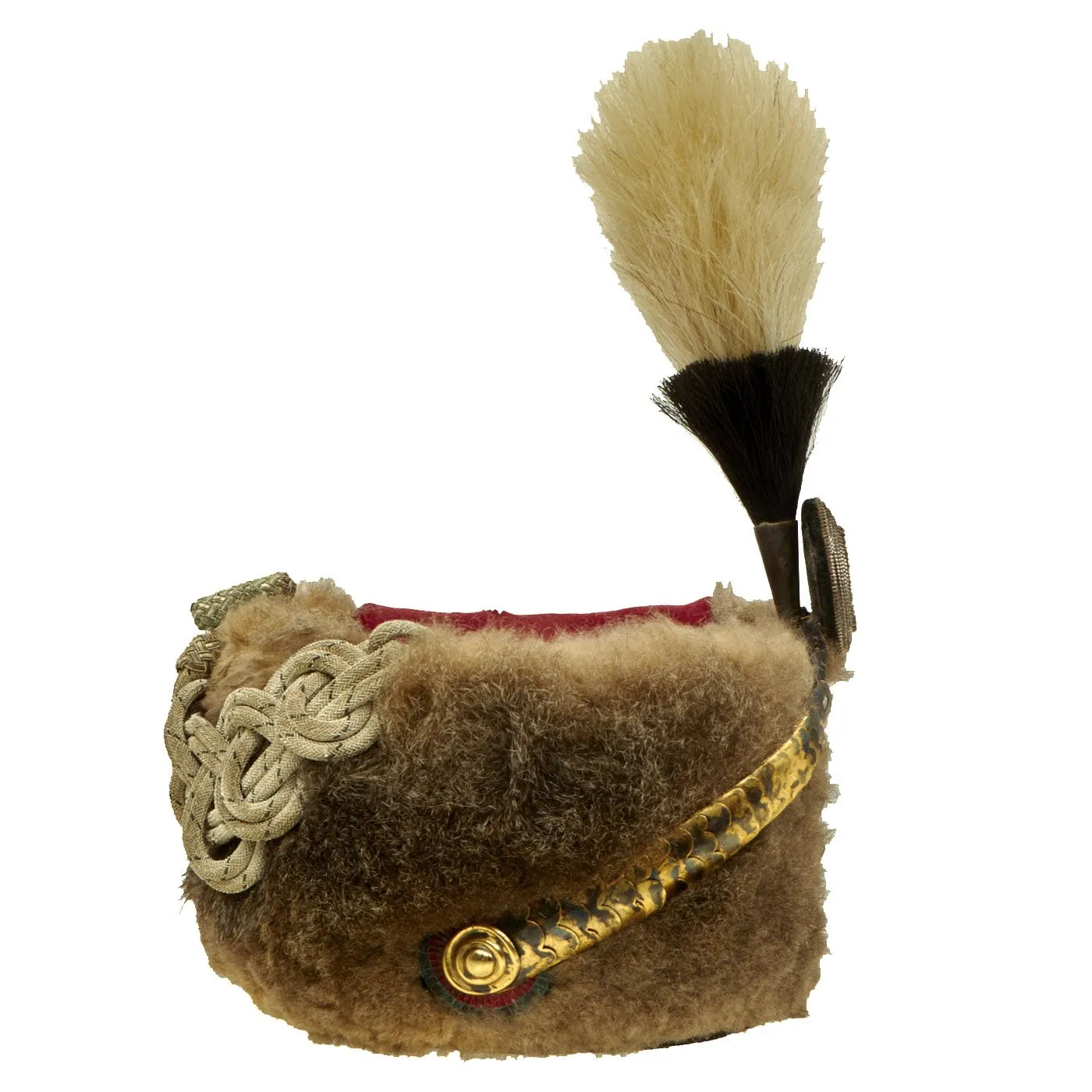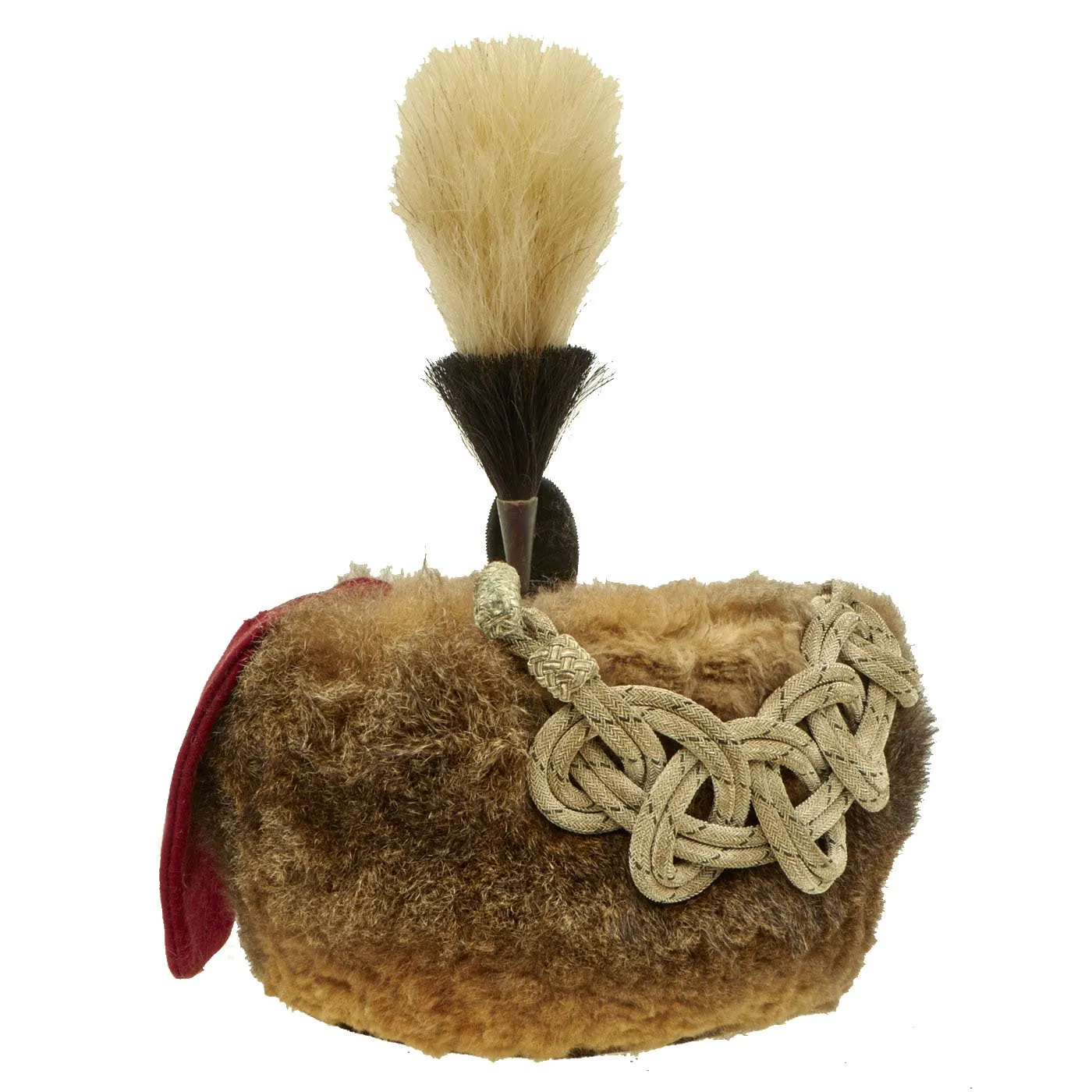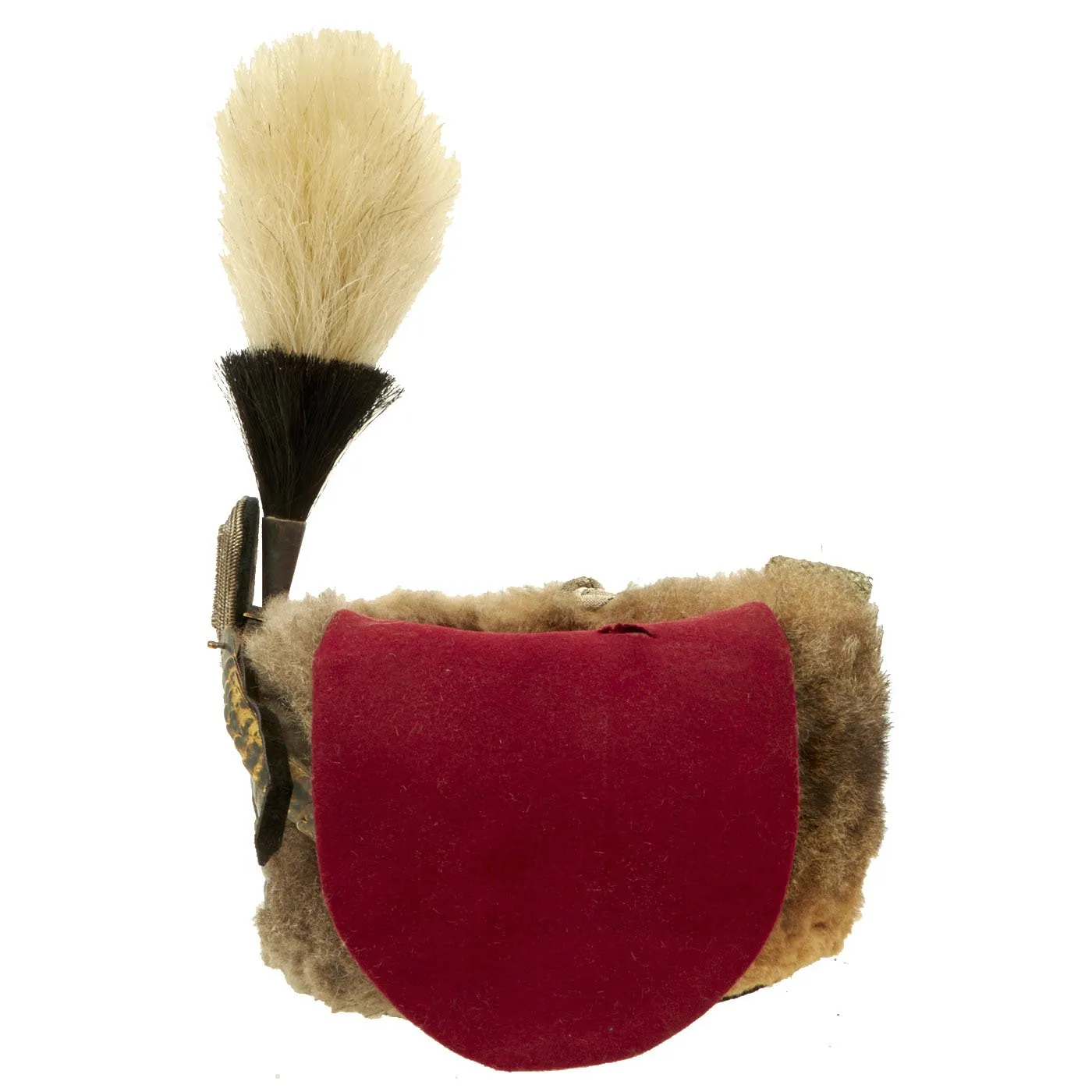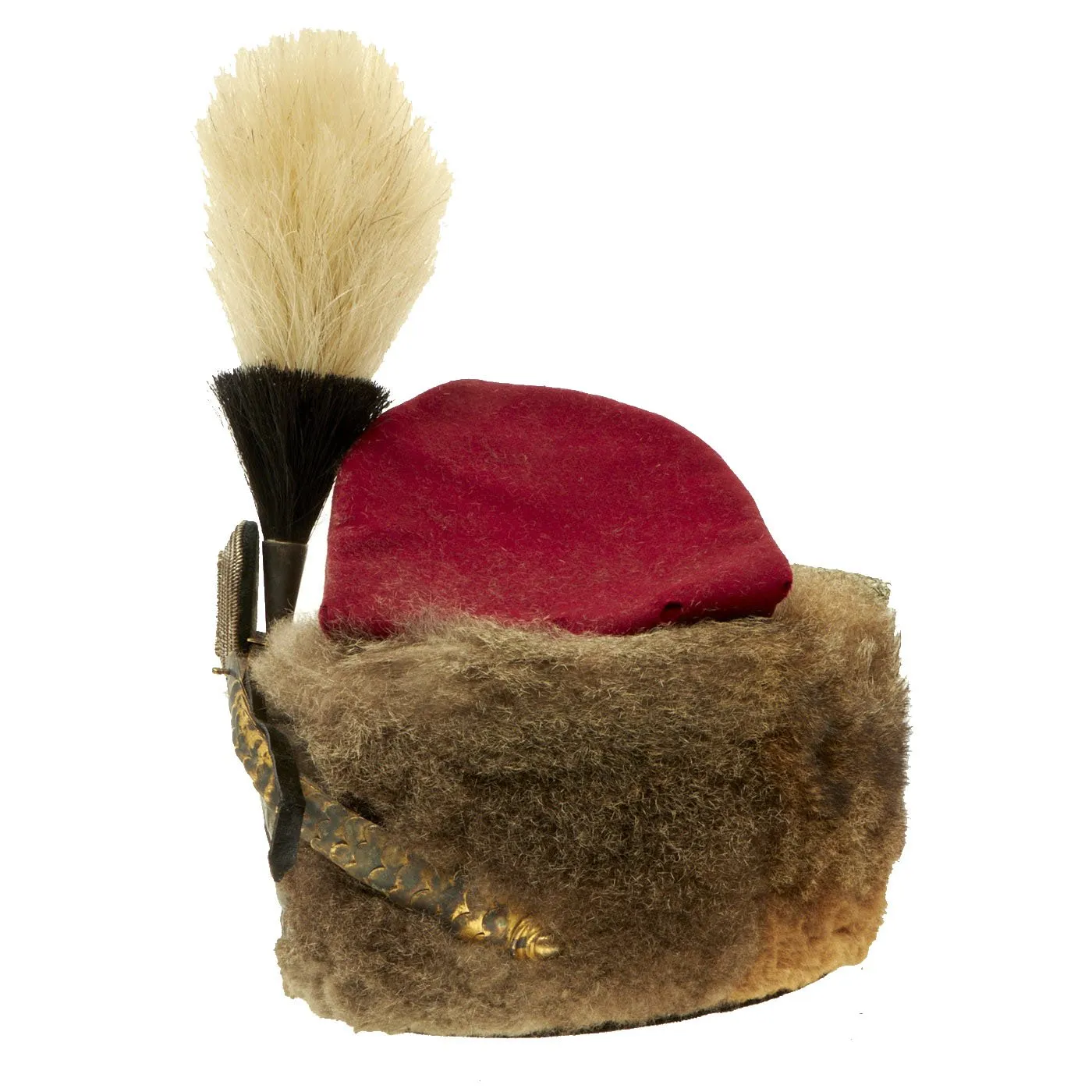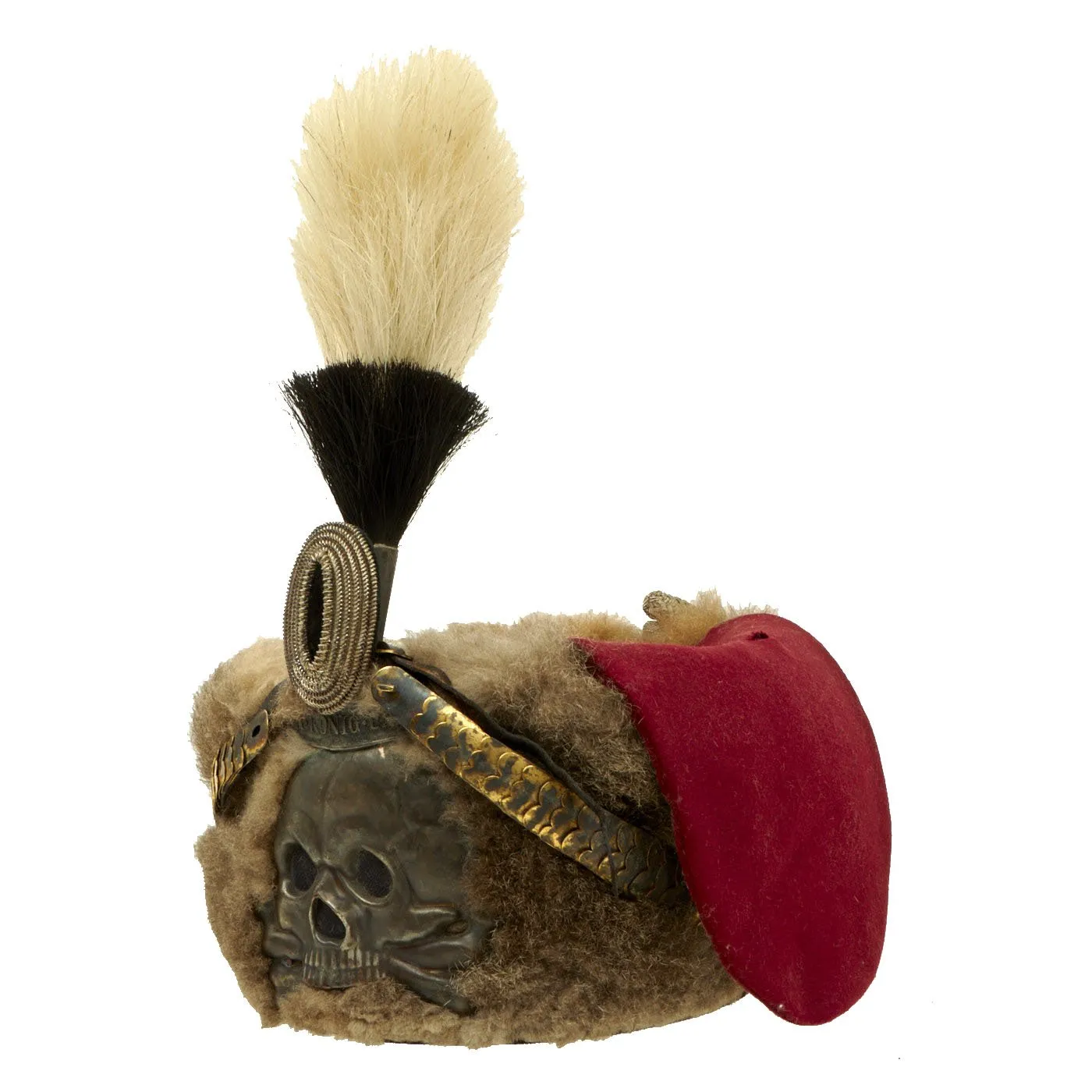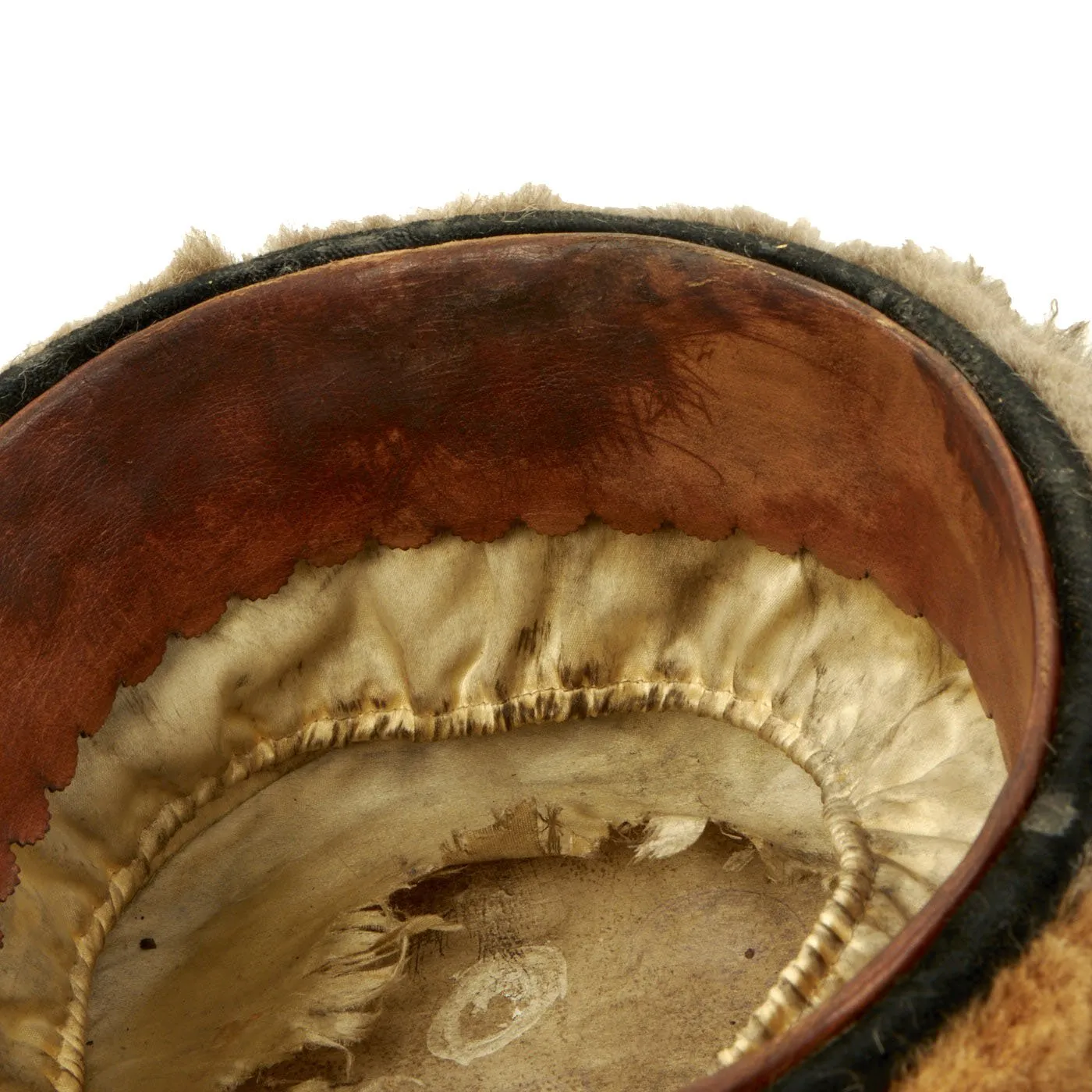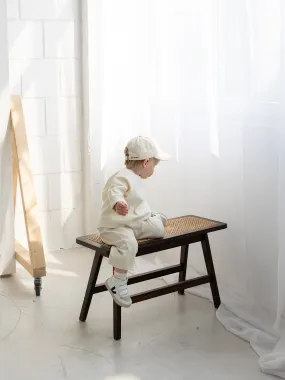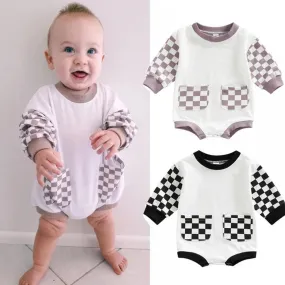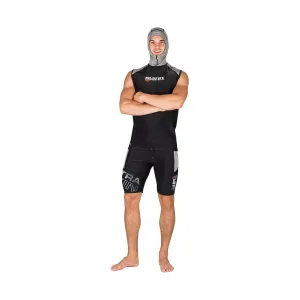Original Item: Only One Available. Here we have a fantastic Imperial German Death's Head 1st Life Hussars Regimental Busby or Pelzmütze (Fur Cap), intended for officers. These differed from the EM/NCO versions both due to the addition of chin scales, as well as the overall quality of the fittings. Also, the fur covering was upgraded, originally being otter fur in the 19th century, and moving to Opossum fur in the early 20th century, when this example probably dates from.
This is truly a beautiful cap, and in a way epitomizes the typical ornate style of 19th century European military headwear. Busby is of course the English name for the Hungarian prémes csákó ("fur shako") or kucsma, a military head-dress made of fur, originally worn by Hungarian hussars. In its original Hungarian form the busby was a cylindrical fur cap, having a bag of colored cloth hanging from the top. The end of this bag was attached to the right shoulder as a defense against sabre cuts.
After this the size and design were scaled down, and they became much more for looks than for actual protection. This example is very similar to the British Busby used by Hussars, but is definitely German. The exterior Opossum skin wrap shows it's 100 year age and the helmet comes with its red slouch bag hanging over the right ear. On the front is a massive Death's Head (Totenkopf) helmet plate in white metal, only used by the Leib Husaren (Life Hussars) regiments. Over this is a bandeau helmet plate with the Prussian Motto MIT GOTT FÜR KÖNIG UND VATERLAND (With God for King and Country, i.e. Prussia) on it. We believe that the red bag indicates it is for the 1st Life Hussars "Totenkopf", first raised in 9 August 1741 along with the 2nd Life Hussars.
The busby comes complete with officer's gilt alloy chin scales which appear to be later replacements, which still retain some of the mercury gilding on the more recessed areas. The leather backing is still solid, and the buckle works correctly. The metal scales and fittings are a bit oxidized, and the chin scales are suspended over the top of the busby, around the cockade, as is often seen.
It is complete with a Prussian (black and white) cockade attached to the center top of the helmet, and German National Colors (red white and black) Kokarden (cockades) around the right side chin strap lug. It also features a black and white plume just behind the cockade. In 1897 the new Reichs-Kokarde in Red-White-Black was introduced for all ranks to commemorate the 100th anniversary of the birth of Kaiser Wilhelm 1st. The Reichs-Kokarde was to be worn on the right side of headwear, around the chinstrap lug. As the busby and Tschako have the state cockade on the top of the helmet, they did not have to move it from the right to left lug.
The rear of the busby has a green flecked silver bullion officer's cord, known properly as a Fangschnur (Lanyard), which was originally used to secure the helmet to the uniform in case it was dropped. As Hussars were a type of light cavalry, retrieving a lost busby was not a simple matter if it reached the ground. It is properly coiled and fastened around a bullion fitting on the busby.
The interior of this Hussars busby is similar to a German officer's pickelhaube, with doeskin leather sweatband, with a rounded motif at the top, attached to a silk lining. In this case it is not a metal supported skullcap, but a drawstring tightened "bag" almost. There is also silk lining the top of the busby, though unfortunately that has degraded a bit, and the inside of the top can be seen.
Extraordinary that before 1914 Cavalrymen actually wore these into battle but by 1918 every soldier had been issued with a STEEL HELMET and horses were largely made redundant with the use of Motor Transport. Representing the very last of the "Pomp and Circumstance" of Military uniforms, this still conveys a sense of Romance. Ready to display!
Use of the Totenkopf as a military emblem began under Frederick the Great, who formed a regiment of Hussar cavalry in the Prussian army commanded by Colonel von Ruesch, the Husaren-Regiment Nr. 5 (von Ruesch). It adopted a black uniform with a Totenkopf emblazoned on the front of its mirlitons and wore it on the field in the War of Austrian Succession and in the Seven Years' War. The Totenkopf remained a part of the uniform when the regiment was reformed into Leib-Husaren Regiments Nr.1 and Nr.2 in 1808. The skull continued to be used by the Prussian and Brunswick armed forces until 1918, and some of the stormtroopers that led the last German offensives on the Western Front in 1918 used skull badges. Luftstreitkräfte fighter pilots Georg von Hantelmann and Kurt Adolf Monnington are just two of a number of Central Powers military pilots who used the Totenkopf as their personal aircraft insignia.




